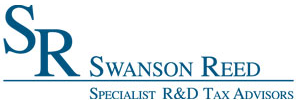R&D Regulations on Internal Use Software
On April 17, 2015 the IRS gathered in Washington to hear the newly proposed R&D regulations on Internal Use Software (IUS). The new regulations were introduced on January 20, 2015 and were based off of a 1998 court case, Norwest Corporation v. Commissioner, which questioned whether IUS constituted as qualified research.
The regulations state that IUS can qualify as R&D, but it must follow specific guidelines. On top of the 4-Part Test, Congress introduced a three-part “high threshold of innovation” test to qualify internal use software.
The three-part high threshold of innovation test consists of the following:
- The software needs to be innovative. This means there must be an economically significant reduction in cost or improvement in speed or other measurable improvements.
- The development involves significant economic risk. This requires both technical uncertainty and economic risk. The uncertainty exists at the outset of the development as to whether the resolution of the technical uncertainties can be achieved and the costs recovered within a reasonable period.
- The software is NOT commercially available. The traditional requirement that the software not be commercially available is retained.
The IUS must satisfy all 3 of those requirements as well as the original requirements of the 4 part test.
The proposed regulations contain examples of how the IRS will apply the process of experimentation requirement.
An eligible process of experimentation must
- Identify uncertainties related to the development of the business component
- Systematically design a proposed solution
- Identify alternatives intended to alleviate those uncertainties
- Conduct systematic trial and error testing to prove the viability of each alternative.
Here are some examples of non-qualified activities:
- Certain types of web design
- Installation of ERP software
- Evaluation of vendor software products.
These new regulations are proposed to be applicable for tax years ending after the date they are published as final regulations. This would be no earlier than calendar year 2016 or possibly later.

















